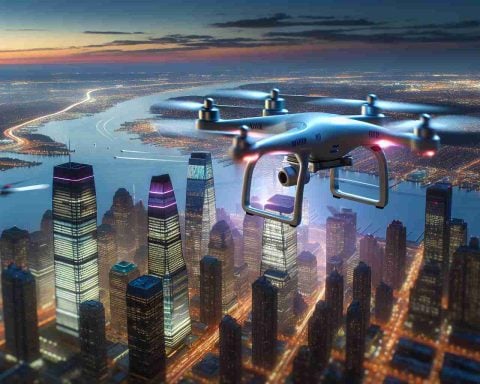Transforming Rice Agriculture with Technology
In Bangladesh, a significant leap for agriculture is taking place, driven by the synergy of machine learning and satellite imagery. This innovative approach is changing how rice productivity is monitored, particularly crucial since Bangladesh ranks as the world’s third-largest rice producer and is highly susceptible to climate fluctuations.
Research conducted by North Carolina State University (NC State) highlights how traditional methods of assessing crops are no longer sufficient. By combining satellite imagery with machine learning, researchers can collect real-time data on crop health, soil moisture, and growth conditions without the exhaustive manual labor of previous methods. This method utilizes regular satellite images from 2002 to 2021, empowering policymakers with concrete data for better resource distribution and crop management.
One of the standout aspects of this research is the model’s impressive accuracy, achieving a predictive range of 90-92% with minimal error. This precision enables a proactive approach to addressing agricultural challenges, such as identifying wet and dry areas to optimize crop selection and boost resilience against climate change.
Collaboration among academic and agricultural institutions has fueled this progress, paving the way for future innovations across various crops globally. This groundbreaking study, published in PLOS ONE, underscores the importance of integrating technology in farming practices, promising a more sustainable and productive future for rice agriculture in Bangladesh.
Revolutionizing Rice Farming: How Tech Innovations are Shaping Agriculture in Bangladesh
Transforming Rice Agriculture with Technology
In recent years, technological advances have significantly transformed rice agriculture in Bangladesh, allowing farmers to enhance productivity and manage challenges posed by climate change effectively. Central to this transformation is the integration of machine learning and satellite imagery, which has emerged as a game-changer for one of the world’s largest rice producers.
# Key Features of the New Approach
1. Real-Time Data Analytics: The combination of satellite imagery and machine learning facilitates real-time data collection about crop health, soil moisture, and growth conditions. This capability is crucial for farmers to make informed decisions throughout the cultivation process.
2. High Predictive Accuracy: The innovative model developed by researchers at North Carolina State University (NC State) demonstrates an impressive predictive accuracy of 90-92%. This high level of accuracy allows for early identification of agricultural challenges, enabling timely interventions.
3. Climate Resilience: By utilizing data analytics, farmers can determine which areas of their fields are excessively wet or dry, enabling them to adapt their crop selections accordingly. This adaptability is essential for enhancing resilience against the unpredictability of climate change.
4. Longitudinal Analysis: Leveraging satellite images from 2002 to 2021 provides a comprehensive overview of trends and changes in crop conditions over time, which is instrumental for policymakers and agricultural planners.
# Pros and Cons
– Pros:
– Enhanced efficiency in data collection.
– Improved decision-making based on accurate analytics.
– Increased crop resilience and productivity.
– Potential to replicate the model across different crops and regions.
– Cons:
– High initial setup costs for advanced technology.
– Data privacy concerns regarding the use of satellite imagery.
– Dependence on technology may pose risks in areas with limited access.
# Use Cases and Applications
This technological approach is not merely limited to rice farming in Bangladesh. Its applications extend to other crops and agricultural practices globally, highlighting its versatility and potential for broader impact. For example, similar methodologies could revolutionize farming in regions that face severe weather fluctuations or water scarcity.
# Pricing and Accessibility
The cost of implementing these technologies can vary significantly based on the scale of operations and the specific tools utilized. While initial investments may be substantial, the long-term gains in productivity and resource management often outweigh these upfront costs. Partnerships with technology providers can also create avenues for financing and training local farmers, ensuring accessibility to these advancements.
# Future Trends and Predictions
As technology continues to evolve, we can expect further innovations in agricultural practices:
– Increased adoption of artificial intelligence to streamline farming operations.
– Greater collaboration between agricultural institutions and tech companies to create localized solutions.
– Expansion into using drones for more granular data collection and monitoring.
# Conclusion
The integration of machine learning and satellite imagery into rice agriculture presents a significant opportunity for Bangladesh to enhance its agricultural resilience and productivity. As this model gains traction, it promises not only to transform local farming practices but also to set a precedent for agricultural innovation in other regions around the globe, paving the way toward a more sustainable future.
For more information about agricultural innovations and their impact, visit NC State University.


















